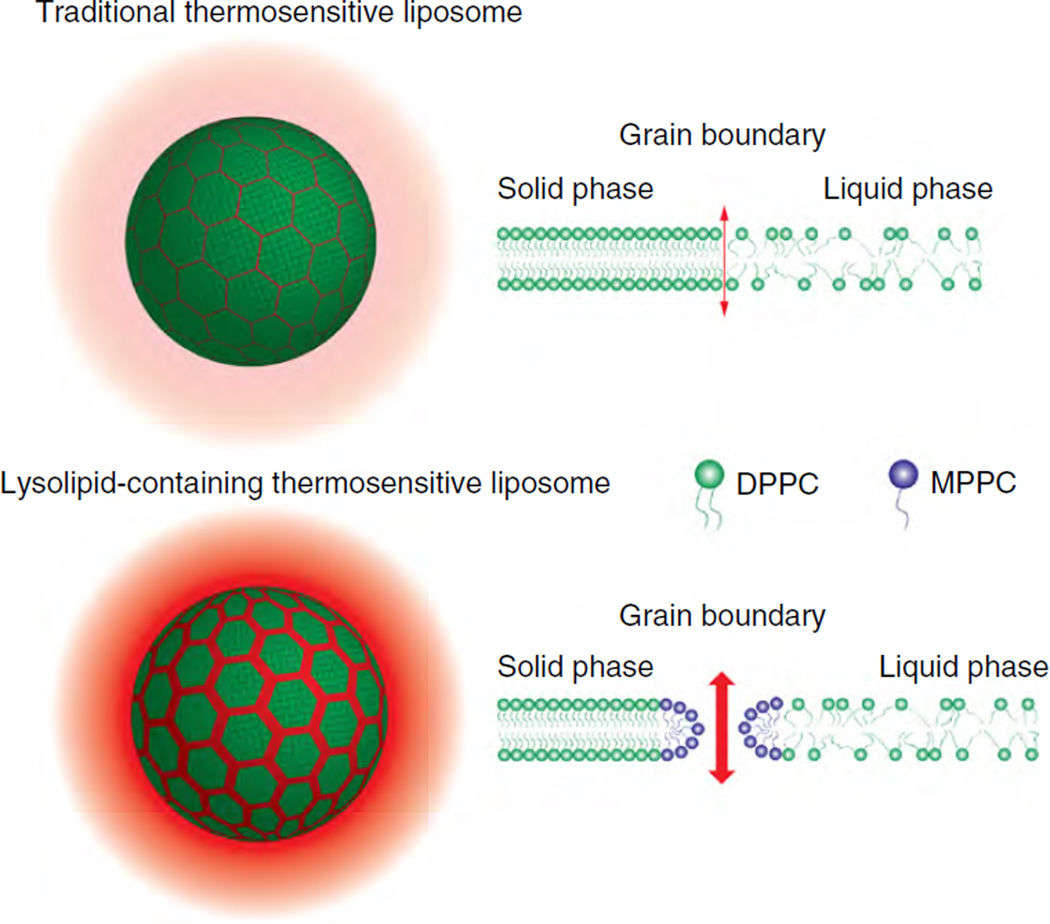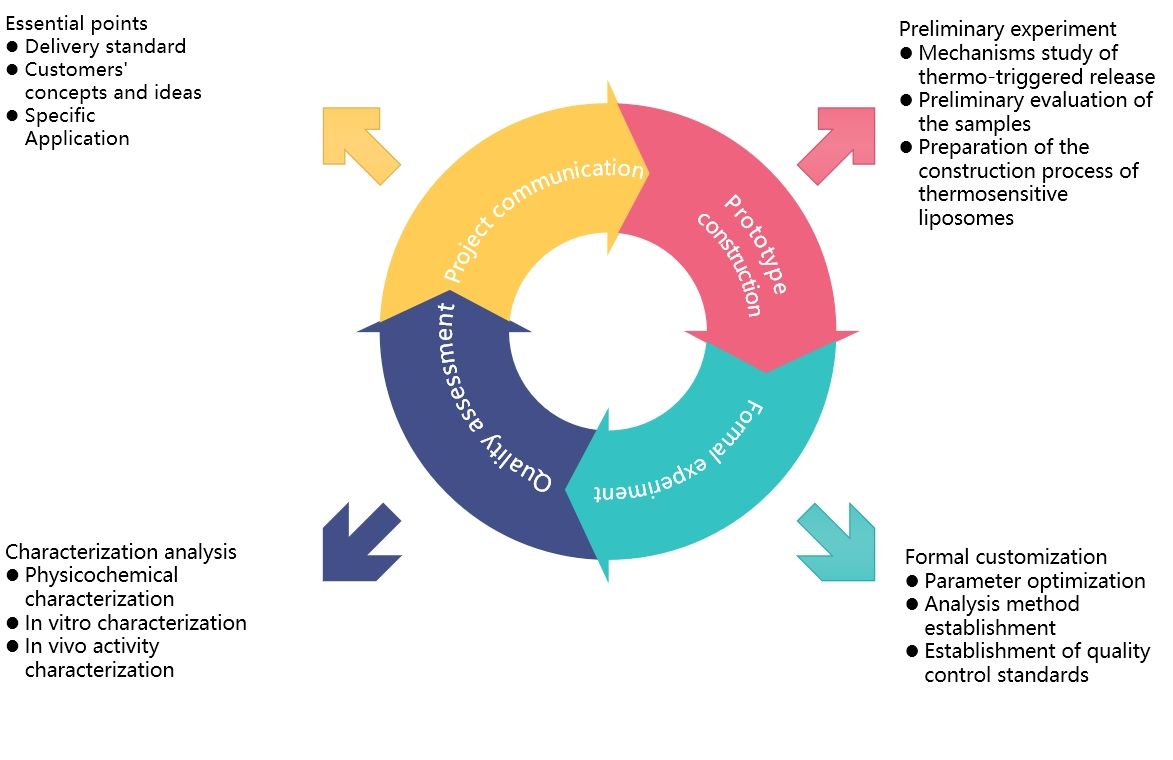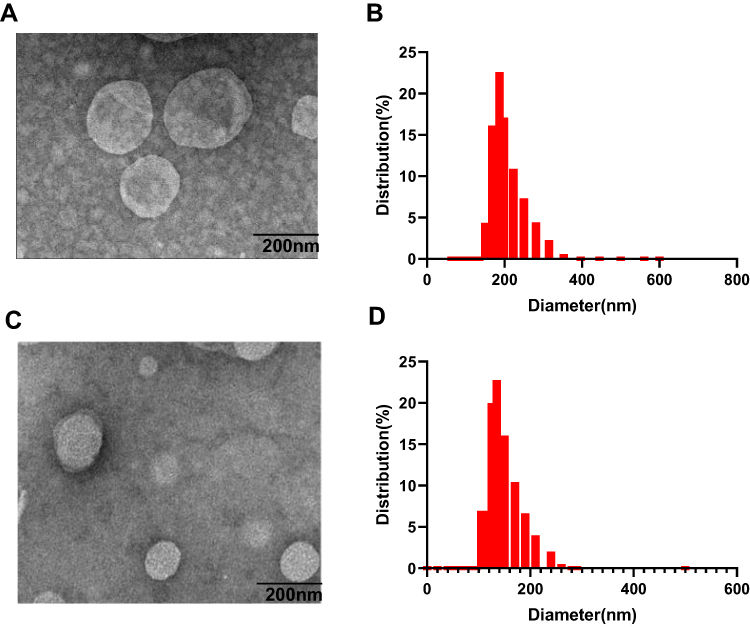Custom Temperature Responsive Liposome Service
Inquiry
Temperature-responsive liposomes are a promising delivery system designed to release encapsulated drugs when exposed to specific temperatures, enabling controlled and predictable targeting of tumors. Unlike traditional thermosensitive liposomes, these advanced formulations achieve a gel-to-liquid phase transition at temperatures just above physiological levels. As a leading global contract service provider, CD Formulation brings extensive expertise in nanocarrier systems and proprietary nanoparticle technology to support pharmaceutical companies and research institutions in developing tailored temperature-responsive liposome formulations.
What are Temperature Responsive Liposomes?
Preclinical studies have shown a synergy between hyperthermia and chemotherapy, with temperature-dependent interactions affecting pathways that regulate apoptosis, cell cycle, DNA repair, and macromolecule synthesis. While cancer cells themselves are no more susceptible to heat than healthy cells, they may be less able to tolerate additional heat stress in the tumor microenvironment due to low oxygen levels, higher than normal acid concentrations, and nutrient deficiencies. In addition, the tumor's chaotic and tightly packed vascular structure makes it more difficult for tumor tissue to dissipate heat, which provides a powerful method for selectively targeting cancer cells for heat. Temperature-responsive liposomes can respond to temperature. When the temperature is close to Tc, the liposome membrane begins to leak and the active substance is released from the membrane. In addition, temperature-responsive liposomes can also enhance the therapeutic effect by increasing the permeability of tumor blood vessels, allowing them to accumulate more in the tumor.
 Fig.1 Schematic diagram of temperature-responsive liposomes. (Ta T, et al., 2013)
Fig.1 Schematic diagram of temperature-responsive liposomes. (Ta T, et al., 2013)
Our Temperature Responsive Liposome Customization Service
Thermosensitive liposomes (TTSL) customization
The exact temperature and width of the phase transition depend on the lipid composition. We can provide customers with matching screening services for lipid mixtures. In addition to the traditional first-generation thermosensitive liposomes based on choline dipalmitoyl phosphate (DPPC), we can also supplement DPPC with other lipids, primarily choline distearoyl phosphate (DSPC) and hydrogenated soybean choline phosphate (HSPC).
Lysolipid-containing thermosensitive liposome (LTSL) customization
Currently, lysolipid-containing thermosensitive liposomes (LLTS) have been used as a drug carrier for tumor-targeted therapy, releasing small molecule cell inhibitors at high temperatures. This service is designed to help customers select the right lysophospholipids and use our technology to improve lipid solubility and prevent premature leakage.
Polymer-modified thermosensitive liposome customization
We can also help our customers realize the idea of temperature-responsive liposomes by adding heat-sensitive polymers to the liposome membrane. The polymers exhibit a lower critical solution temperature (LCST), below which the liposome membrane maintains its stability, and above which the polymer undergoes structural changes and releases the active substance.
Long-circulating thermosensitive liposome customization
DPPG-TSL is a new generation of long-cycle thermosensitive Liposome, which has both stability and rapid release. We are always trying to challenge ourselves, learn to exchange different technologies, and contribute to the development of new delivery systems like these.
Multifunctional-thermosensitive liposome customization
We improve targeting efficiency and bioavailability by combining heat-sensitive and other responsive technologies, including making surface modifications to some molecules, such as targeting ligands.
 Fig.2 Schematic diagram of our workflow. (CD Formulation)
Fig.2 Schematic diagram of our workflow. (CD Formulation)
Our Platforms for Temperature Responsive Liposome Customization
We have established the following platforms and technologies:
| Techniques and Platforms |
Specifics |
| Lipid mixtures Screening Platform |
- This platform supports screening different lipid formulations, including types and ratios for TTSL, lysolipids for LTSL, etc.
|
| In Vitro Characterization Platform |
- In vitro release evaluation platform
- Temperature stimulation response assessment.
|
| Multifunctional-thermosensitive Technique |
- To explore the possibility of coordination of different responses.
- To study the mechanisms of the various responses.
|
Applications of pH-sensitive Liposomes
| Drug Delivery |
Anti-tumor, anti-inflammatory, topical administration |
| Cosmetics |
Anti-photodamage and whitening |
| Pesticides |
Temperature control release, adapt to pest population fluctuations |
| Medical imaging |
Fluorescence imaging and magnetic resonance imaging |
| Ultrasonic medicine |
Radiofrequency ablation |
Why Choose CD Formulation?
- TOP teams. Our research team consists of a group of scientists who are well-versed in immunology, medicine, biology, and other disciplines, and have extensive experience in the development of thermosensitive liposome delivery systems.
- Advanced temperature responsive liposome development technology and platform. With our versatile thermosensitive technology and unique thermosensitive liposome development platform, we are confident that we can help our customers transform the concept of thermosensitive liposomes into efficient products.
- Omni-directional services. Our services encompass the conceptual design of thermosensitive liposomes, personalized liposome models, in vivo characterization, and assessment, offering a comprehensive and captivating experience.
Published Data
Technology: Long-circulating thermo-sensitive liposome technique
Journal: Int J Nanomedicine
IF: 8.0
Published: 2020
Results: The primary aim of this study is to develop a targeted, long-circulating thermosensitive intelligent release liposome (LCTL) system to enhance therapeutic efficacy and reduce toxicity. The authors utilized the reverse evaporation method (REV) to prepare oxaliplatin (L-OHP)-loaded LCTL (L-OHP/LCTL) and assessed its physical properties, including encapsulation efficiency (EE), size, zeta potential, stability, as well as its release behavior, cytotoxicity, and in vivo evaluation. The findings demonstrated that LCTL not only prolonged circulation time but also improved accumulation and achieved selective release at the tumor site. In conclusion, LCTL shows promise as a carrier for oxaliplatin-based therapy of solid tumors.
 Fig.3 The TEM images of oxaliplatin long-circulating thermo-sensitive liposome. (Li Y, et al., 2020)
Fig.3 The TEM images of oxaliplatin long-circulating thermo-sensitive liposome. (Li Y, et al., 2020)
CD Formulation has established a dedicated development platform for temperature-sensitive liposomes in order to offer customers a wide range of options. Please do not hesitate to contact us if you require any assistance.
References
- Ta T, Porter TM. Thermosensitive liposomes for localized delivery and triggered release of chemotherapy. Journal of Controlled Release: Official Journal of the Controlled Release Society. 2013 Jul; 169(1-2): 112-125.
- Li Y, Xu P, et al. Long-Circulating Thermosensitive Liposomes for the Targeted Drug Delivery of Oxaliplatin. Int J Nanomedicine. 2020; 15:6721-6734
How It Works
STEP 2
We'll email you to provide your quote and confirm order details if applicable.
STEP 3
Execute the project with real-time communication, and deliver the final report promptly.
Related Services


 Fig.1 Schematic diagram of temperature-responsive liposomes. (Ta T, et al., 2013)
Fig.1 Schematic diagram of temperature-responsive liposomes. (Ta T, et al., 2013) Fig.2 Schematic diagram of our workflow. (CD Formulation)
Fig.2 Schematic diagram of our workflow. (CD Formulation) Fig.3 The TEM images of oxaliplatin long-circulating thermo-sensitive liposome. (Li Y, et al., 2020)
Fig.3 The TEM images of oxaliplatin long-circulating thermo-sensitive liposome. (Li Y, et al., 2020)
